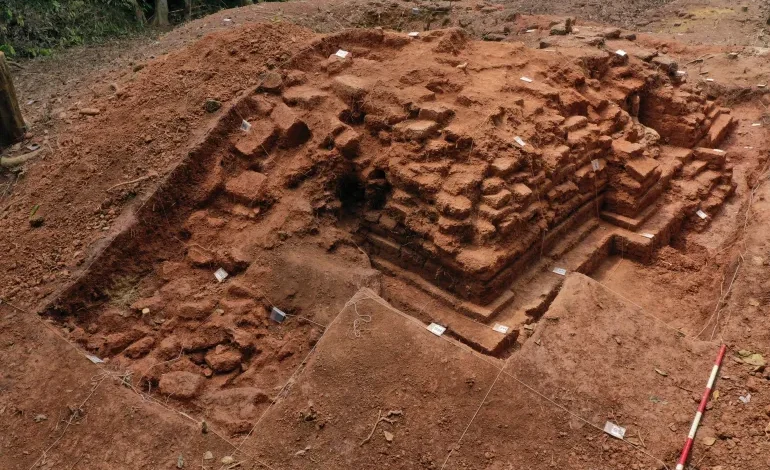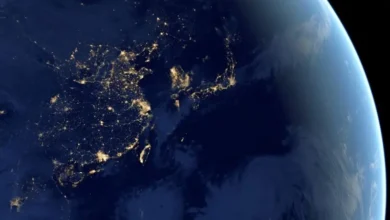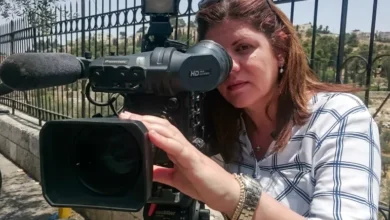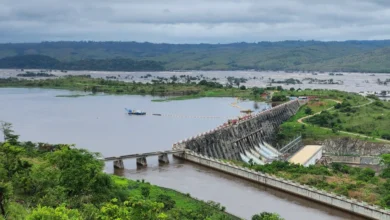“I realised that nobody had done proper investigation [since then] and managed to get a fund to survey the site in 2017,” Nasha told Al Jazeera.
“We used electronic waves to do physical detection of what was hidden underground and found there were some big structures underneath.”
Nasha received more funding from Malaysia’s Ministry of Higher Education to conduct proper excavations in 2022, and his team was stunned to discover how well-preserved the site was compared with those unearthed in the Bujang Valley between the 1930s and 1950s – some of which had deteriorated because of erosion, human activities and even accidental destruction.
“At first we only excavated 40 percent of the whole Bukit Choras site, finding a stupa about nine metres long,” said Nasha. “But the most important discovery was two stucco statues of Buddha in good condition that have never been found in the area before.”
Stucco, Nasha explained, was thought to only be found in Java and Sumatra in neighbouring Indonesia, as well as in India, at the time.
Ancient ties
Placed in two niches together with an inscription in Pallava (the language of the Pallava Dynasty that ruled in South India between the 3rd and 8th century CE), Bukit Choras’s two Buddha statues have architectural features resembling those of other ancient artefacts from the Srivijaya kingdom that prospered between the 7th and 11th centuries CE, in an area from southern Thailand, through the Malay peninsula and into Java. The statues are now being studied and restored at CGAR on Penang island.
“The discovery of two still intact, human size statues and the inscription is very significant for further studies,” Mohd Azmi, the commissioner of Malaysia’s National Heritage Department, told Al Jazeera. “This shows that the site has not been disturbed and has the potential to give new evidence on Ancient Kedah’s history.”
The discoveries in the Bujang Valley testify to an ancient civilisation that archaeologists refer to as the “Ancient Kedah Kingdom”. It prospered between the 2nd and the 14th century CE, stretching across the northwestern coast of the Malay peninsula and into Thailand predating the arrival of Islam in the region.
Ancient Kedah grew rich on international trade as well as the production of iron and glass beads, prospering as a multiethnic and multireligious ancient Southeast Asian polity where residents and foreign traders lived together.
Nasha points out that findings in the area suggest that for centuries, traders from China, India and even the Middle East came to the area to do business – and were often forced to spend long spells in Kedah when the harsh monsoon seasons made sailing back home impossible.
Temples and artefacts were built by local labourers mixing foreign architectural motifs and knowledge with two main influences.
“First is Buddhism, classified in areas such as Sungai Mas, Kuala Muda, and Sungai Batu in Semeling, plus the most recent being the temple site at Bukit Choras,” explained Asyaari Muhamad, a senior archaeologist and the director of the Institute of the Malay World & Civilisation at the Universiti Kebangsaan Malaysia, referring to some of the Bujang Valley sites.
“The rest, such as the archaeological site in the Pengkalan Bujang complex [near the village of] Merbok, received Hindu influences. This classification is [based on] the discovery of artefacts and temple structures symbolising the religious beliefs or influences at that time,” he said.
All of Ancient Kedah’s temples functioned as places of worship mostly for the mixed population of migrant traders and workers.
“In [the area of] Sungai Bujang, for example, most of the temples are clustered together near the main trading area and used to cater for the religious needs of the traders, while in Sungai Muda, they catered to the traders and workers of the local glass bead and pottery-making sites,” said Nasha.
“We believe it was the same in Sungai Batu, the main site for Ancient Kedah’s iron smelting furnaces, where we found evidence of a community and its temples. But in Bukit Choras, proof of economic activities or industry has not yet been found,” he said.
Archaeological discoveries suggest that while Ancient Kedah thrived for centuries, it went into decline when climate transformed the large maritime bay and accessible riverways leading to the iron smelting site of Sungai Batu into mangrove and tidal swamps that were impassable to ships.
“Multiculturalism is not new in the Malay peninsula and Ancient Kedah,” added Nasha. “It started with trade in the 2nd century, when there was an increase of connectivity between China, India and Southeast Asia, and continued well into the Melaka kingdom, which we know was also a multicultural society, and continues today.”
The Malaysia of the 21st century is also a multiethnic and multireligious Southeast Asian nation made up of a majority of Malay Muslims, followed by Chinese, Indians and more than 50 other ethnic groups living across the peninsula and the northern half of the island of Borneo in the states of Sarawak and Sabah.
Asyaari said it was important for researchers to collaborate and reach a better understanding of the origins of civilisations in and beyond the Malay peninsula.
“Any statements about new or previous findings need to be carefully examined so that […] a theory, discovery, and the results of a study do not become an issue and controversial in nature,” he said.
All of Ancient Kedah’s temples functioned as places of worship mostly for the mixed population of migrant traders and workers.
“In [the area of] Sungai Bujang, for example, most of the temples are clustered together near the main trading area and used to cater for the religious needs of the traders, while in Sungai Muda, they catered to the traders and workers of the local glass bead and pottery-making sites,” said Nasha.
“We believe it was the same in Sungai Batu, the main site for Ancient Kedah’s iron smelting furnaces, where we found evidence of a community and its temples. But in Bukit Choras, proof of economic activities or industry has not yet been found,” he said.
Archaeological discoveries suggest that while Ancient Kedah thrived for centuries, it went into decline when climate transformed the large maritime bay and accessible riverways leading to the iron smelting site of Sungai Batu into mangrove and tidal swamps that were impassable to ships.
“Multiculturalism is not new in the Malay peninsula and Ancient Kedah,” added Nasha. “It started with trade in the 2nd century, when there was an increase of connectivity between China, India and Southeast Asia, and continued well into the Melaka kingdom, which we know was also a multicultural society, and continues today.”
The Malaysia of the 21st century is also a multiethnic and multireligious Southeast Asian nation made up of a majority of Malay Muslims, followed by Chinese, Indians and more than 50 other ethnic groups living across the peninsula and the northern half of the island of Borneo in the states of Sarawak and Sabah.
Asyaari said it was important for researchers to collaborate and reach a better understanding of the origins of civilisations in and beyond the Malay peninsula.
“Any statements about new or previous findings need to be carefully examined so that […] a theory, discovery, and the results of a study do not become an issue and controversial in nature,” he said.











